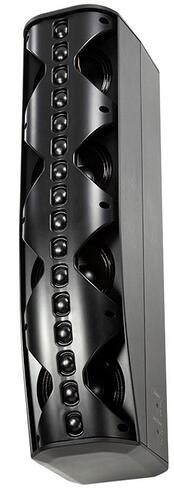Home owners tend to focus on the aesthetics first, but sound is an essential element, especially when people are living and working in the same place.
Having the sound of traffic disrupt your sleep or neighbours complain about the television volume while you are watching Netflix late at night are not ideal situations.
So, plan for soundproofing and room acoustics, especially if you live near a busy road or in a dense residential area.
There is a difference between the two, says Mr Edric Hwang, co-founder of acoustic-focused design studio Ehka F.
“Soundproofing refers to the prevention of sound transmission from one space to another, like the din of roadworks while you’re indoors,” he says. “Acoustics, on the other hand, refers to the amount of reverberation or echoing that can be heard within a room when one is speaking or playing music.”
Both are equally important during resting and working periods.
Mr Hwang says: “When you’re in a room with proper acoustic treatment, instead of being distant and ‘echo-ey’, your voice will be clearer and easier for others to focus on during a conference call.”
Improving the sound in your home is easy when you plan ahead and use the right materials.
Applying soundproofing
Soundproofing a room takes planning, as most solutions require renovation.
1. Replace hollow-core doors or add seals
Are you still able to hear the TV even though the door is closed?
Doors in standard Housing Board (HDB) flats have hollow cores that let vibrations and, therefore, sound in. You can remedy this by replacing them with solid-core ones, which will cost between $1,200 and $1,800, depending on the size.
For an immediate, less expensive solution, adding top and bottom seals to existing doors can block sound. Invest in aluminium ones; rubber and foam are less effective.
2. Replace regular windows with soundproofed ones
Replacements can start at $2,400 a window, but they can be a good investment if you live next to a busy road or a train track.
Mr Hwang says: “Many HDB-approved window contractors can provide soundproofing solutions.”
Mr Hwang says wooden floors typically reverberate less and have less echoes than concrete or tiled floors. PHOTO: THELONIUS INTERIOR CONCEPT & DESIGN
Improving acoustics
This is essential for areas of rest or work, where you do not want noise to reverberate. Compared with soundproofing, the renovation process is minimal.
1. Damp sound with soft furnishings or acoustic panels
Damping or reducing resonance in a room can be as simple as adding a thick rug or curtains as these absorb or damp sound well.
In noisier areas, you may need sound-absorbing panels such as the Oddlaug ones by Ikea.
You can also get custom ones that cost between $220 and $450 a panel from companies such as Ehka F. These can be easily added to walls with minimal or no renovation.
2. Opt for wooden flooring if you are renovating
Mr Hwang says wooden floors typically reverberate less and have less echoes than concrete or tiled floors.
He advises hiring contractors who specialise in acoustics to effectively treat and soundproof a home, as the materials and skills needed are different from those used in a standard renovation.





